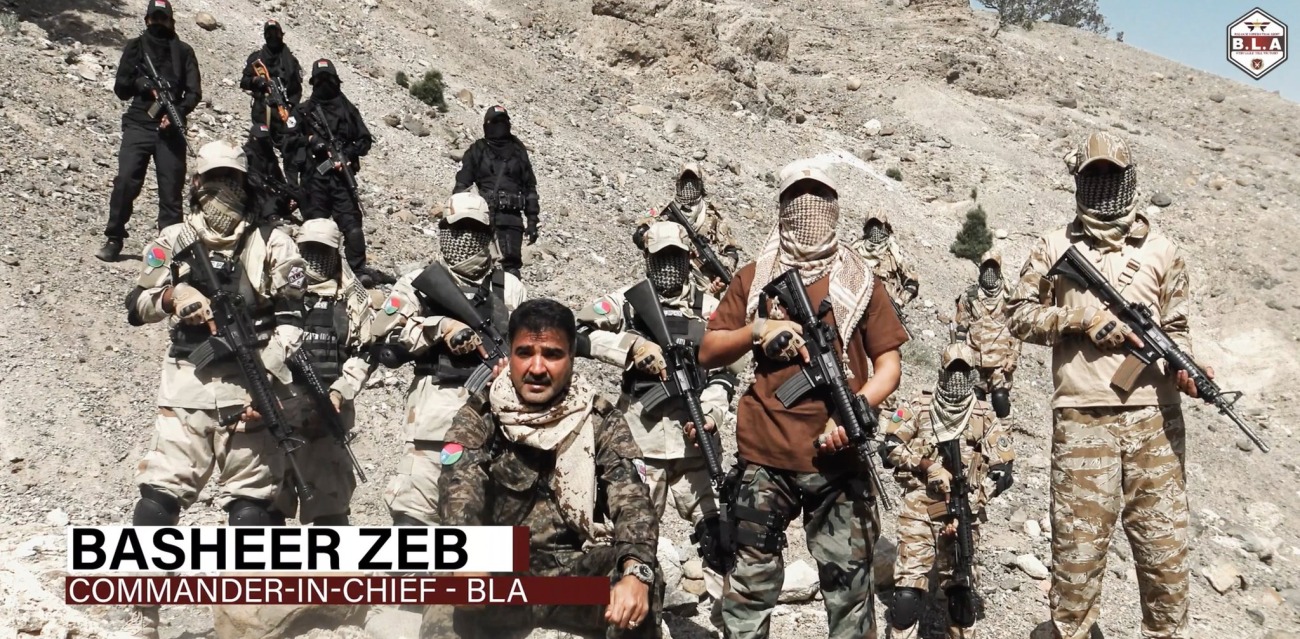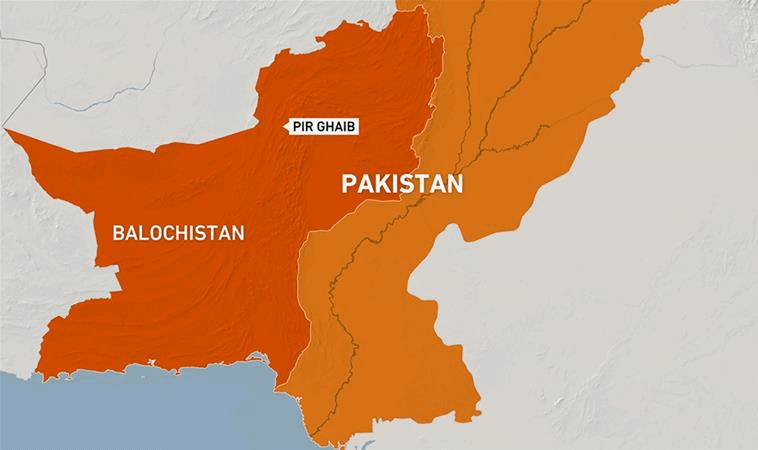In late August, coordinated attacks by separatist militants across Balochistan led to over 70 fatalities. These militants, who seek the region’s secession due to its resource richness, have increasingly targeted government forces and projects under the China-Pakistan Economic Corridor (CPEC).
Pakistan’s Interior Minister Mohsin Naqvi recently said that a spate of terror attacks in Balochistan was “planned to ruin” the Shanghai Cooperation Organisation (SCO) summit in October.
Interestingly, Pakistan is also scheduled to host the much-anticipated Champions Trophy in early 2025, which could also be impacted. Former Pakistan wicketkeeper-batsman Rashid Latif recently said there is “fifty percent confirmation” that India will visit Pakistan, while ex-spinner Danish Kaneria flagged safety concerns for the Indian players.
“Look at the situation in Pakistan. I have to say that the Indian team should not go to Pakistan,” Kaneria told ‘Sports Tak.’ “Pakistan should think about it, then the ICC will make its decision, and most likely it will be a hybrid model; it will be played in Dubai.”
Meanwhile, the opening of a Chinese-funded airport in the province was postponed for a security assessment. This airport, part of President Xi Jinping’s Belt and Road Initiative, is a significant component of Pakistan’s broader development program, which also includes the construction of a deep-water port near the new $200-million airport in Gwadar.
According to Pakistan’s Civil Aviation Authority (CAA), this joint venture between Pakistan, Oman, and China is nearing completion and is expected to accommodate both domestic and international flights.
Prime Minister Shehbaz Sharif was initially scheduled to inaugurate the airport on August 14 alongside Chinese officials. However, according to officials, the event was canceled due to a sit-in protest organized by an ethnic Baloch rights group.
The recent surge in violence in Balochistan underscores the deep-seated conflict that has been aggravated by the China-Pakistan Economic Corridor (CPEC). Although this large-scale infrastructure initiative spearheaded by China promises economic growth, it has also fueled local discontent and intensified separatist sentiments in Pakistan.
On August 25th, Balochistan province witnessed its most extensive militant attacks in years. Separatist forces, led by the Balochistan Liberation Army (BLA), launched coordinated strikes on police stations, railways, and highways, resulting in over 100 casualties. These attacks, involving hundreds of fighters and multiple suicide bombers, represent a significant escalation in the ongoing separatist struggle.
Prime Minister Shehbaz Sharif condemned the attacks in a televised address, stating they aim to disrupt the China-Pakistan Economic Corridor (CPEC) projects. China also strongly denounced the violence.
To understand why the Baloch people oppose what Pakistan views as ‘Progress,’ we must delve into the complexities of CPEC and its impact on the region.

China-Pakistan Economic Corridor (CPEC)
Pakistan, struggling to fully develop its mineral-rich regions, has turned to China for assistance in building the necessary infrastructure. The China-Pakistan Economic Corridor (CPEC), valued at around $65 billion, is a key component of Chinese President Xi Jinping’s Belt and Road Initiative (BRI).
CPEC, a massive bilateral project, aims to enhance Pakistan’s infrastructure for improved trade with China and greater integration within South Asia. It was launched on April 20, 2015, when Chinese President Xi Jinping and Pakistani Prime Minister Nawaz Sharif signed 51 agreements and memorandums of understanding.
Spanning 3,000 kilometers, CPEC connects China’s northwest Xinjiang Uygur Autonomous Region to Pakistan’s Gwadar Port in Balochistan. Xinjiang borders the countries of Mongolia, Russia, Kazakhstan, Kyrgyzstan, Tajikistan, Afghanistan, Pakistan, and India, and the ancient Silk Road ran through its territory.
CPEC includes a network of highways, railways, pipelines, and energy projects. Its goal is to transform Pakistan’s economy by modernizing its transportation systems and linking the deep-sea ports of Gwadar and Karachi to China and beyond.
China’s investment in CPEC is driven by strategic goals, particularly reducing the time and cost of transporting goods and energy to China by bypassing the Strait of Malacca and the South China Sea.
While CPEC presents significant economic opportunities, it has also become a flashpoint for conflict in Balochistan.
The Balochistan Conundrum
Balochistan, Pakistan’s largest province by land area, is home to the Baloch people, a Sunni Muslim ethnic group spread across Pakistan, Iran, and Afghanistan. Despite the area’s vast size—roughly equivalent to France—it is sparsely populated by around 9 million Balochs who are more connected to their tribes than to the nation-states.
Balochistan is also a hotbed of separatist insurgency. The landscape of conflict in the region has been further complicated by geopolitical shifts, most notably the Taliban’s return to power in Afghanistan in August 2021.
Since the Taliban, backed by Pakistan’s security forces, recaptured Kabul, Pakistan has seen a surge in terrorist attacks, particularly in Balochistan and Khyber Pakhtunkhwa provinces bordering Afghanistan. In 2023 alone, over 650 attacks were recorded, with 23% occurring in Balochistan.
The paradox of Balochistan lies in its immense natural wealth juxtaposed against the poverty of its people. The province is a treasure trove of valuable resources, including gold, diamonds, silver, and copper. Yet, despite this mineral abundance, the local population remains among the most economically disadvantaged in both Pakistan and Iran. This stark disparity between potential and realized wealth forms the crux of much of the region’s unrest and dissatisfaction.
Currently, in Balochistan, major grievances include the marginalization of the local workforce and increased militarization. Despite assurances of job creation, the majority of employment opportunities generated by CPEC have been filled by workers from other Pakistani provinces or from China, fueling resentment among local job seekers.
Furthermore, the heightened security measures implemented to safeguard CPEC projects have led to a significant military presence in the region, raising concerns about human rights abuses and further alienating the local population.
The distribution of CPEC’s economic benefits has also been a point of contention. While other regions of Pakistan, like Punjab, have seen tangible improvements in infrastructure and economic activity, Balochistan continues to lag behind in crucial areas such as healthcare, education, and basic infrastructure.
Power shortages persist due to high fossil fuel costs and an outdated grid, and local militant violence has further disrupted construction efforts in Balochistan.

The “Gwadar Ko Haq Do” Movement
At the heart of CPEC lies Gwadar, a deep-sea port in Balochistan envisioned as a pivotal trade link between southwestern China and the Arabian Sea. While touted as a game-changer for regional economics, CPEC has become a double-edged sword for Balochistan.
The promise of development and prosperity has been met with a complex reality on the ground.
Balochistan hosts Gwadar, a deep-sea port and the centerpiece of the China-Pakistan Economic Corridor (CPEC), envisioned as a vital trade link between southwestern China and the Arabian Sea.
While Gwadar port is considered the ‘Crown Jewel’ of CPEC, the local population has seen little improvement in their living conditions. Basic amenities like clean water, electricity, and healthcare remain scarce. The development of the port has severely impacted Gwadar’s fishing community, with many losing their livelihoods due to restricted access to the sea.
In response to these hardships, the “Gwadar Ko Haq Do” (Give Gwadar Its Rights) movement began in November 2021, with tens of thousands of locals protesting for their rights and a fair share of the port’s benefits.
Despite massive investments, Gwadar’s economic benefits have primarily flowed to Chinese firms and workers, fueling local resentment. Promised employment opportunities have not materialized, and Chinese trawlers have depleted fish stocks, exacerbating the situation.
This discontent has led to attacks on Chinese targets by Baloch militant groups, who have long fought for a larger share of the region’s wealth, which they believe has been unjustly denied by the central government.
Pakistan’s Debt & Dilemma
In early August 2024, newly elected Pakistani Prime Minister Shahbaz Sharif, along with Army Chief General Asim Munir, visited China to discuss major projects under the China-Pakistan Economic Corridor (CPEC) while sidelining the hardships faced by Balochistan.
The Pakistani government aims to secure three new projects worth $12 billion, including railways and a hydroelectric plant. It has also agreed to increase security measures for Chinese nationals in the country.
However, CPEC has significantly strained Pakistan’s finances, with debt to China now exceeding 25% of the country’s total debt.
While CPEC promises economic growth, it has also created challenges for Pakistan. Security concerns have increased as attacks on Chinese nationals and CPEC projects have risen.
The situation in Balochistan highlights the need for a balanced approach to economic, security, and social issues. Pakistan’s rulers currently face a dilemma: Should they prioritize appeasing China and pursuing perceived progress at the expense of mounting debt or focus on addressing local grievances to achieve lasting peace?
- Shubhangi Palve is a defense and aerospace journalist. Before joining the EurAsian Times, she worked for E.T. Prime. In this capacity, she focused on covering defense strategies and the defense sector from a financial perspective. She offers over 15 years of extensive experience in the media industry, spanning print, electronic, and online domains.
- Contact the author at shubhapalve (at) gmail (dot) com




